This comprehensive guide has everything you need to know if you’re considering a curly hair tarantula as a pet. From how to look after them, to whether you can handle them, and how long they live.
- Where do curly hair tarantulas come from?
- Curly hair tarantula appearance
- How big do curly hair tarantulas get?
- Are curly haired tarantulas good pets?
- Curly hair tarantula temperament
- Do curly hair tarantulas bite?
- Caring for a curly hair tarantula
- Curly hair tarantula lifespan
- How to find a curly hair tarantula for sale
- Is a curly hair tarantula right for me?
A curly hair tarantula is one the more unusual tarantula species to keep as a pet. They have distinctive curled hairs on their legs and abdomen, which they can flick into the air as a defense mechanism. Experts advise against handling them, but they can still be rewarding, low-maintenance pets for the right owner.
This female curly haired tarantula has made a burrow and decorated the entrance with webs – a good sign that she’s feeling safe and relaxed in her habitat. Let’s get to know her species better!
What is a curly hair tarantula
Curly hair tarantulas are one of the 1,000+ tarantula species identified to date. They are also known by their Latin name Tliltocatl albopilosus, and a previously used Latin name Brachypelma albopilosa. They also rest horizontally, rather than vertically.
Where do curly hair tarantulas come from?
Wild curly haired tarantulas have only been recorded in a small region overlapping the border of Costa Rica and Nicaragua. Despite that, they are sometimes called the Honduran curly hair tarantula. This appears to be a mistake. They were first documented and brought to the United States in around 1980, and owing to habitat destruction in their homelands there are probably more pet curly hairs than wild ones now.
Curly hair tarantula appearance
Curly hair tarantulas can achieve a leg span of over 6 inches, and they are easily identified by the way their hairs curl up and back on themselves, rather than lying flat. Females have dark bronze hairs, whilst males have more golden-bronze colored hairs. The most reliable way to tell males and females apart is to wait until their final molt, and look for tibial hooks on their legs. Only males have tibial hooks – to hold a female’s fangs at a safe distance during mating!
How big do curly hair tarantulas get?
Tarantulas make up some of the heaviest spider species on planet Earth, and a full grown female curly hair tarantula can weigh up to 2 ounces! Their leg span from front toe to back toe can be as much as 6 inches, but males are usually smaller. Males reach their full adult size in 4.5 to 5 years, and as females are a little larger, they take 5.5 to 6 years to reach full size.
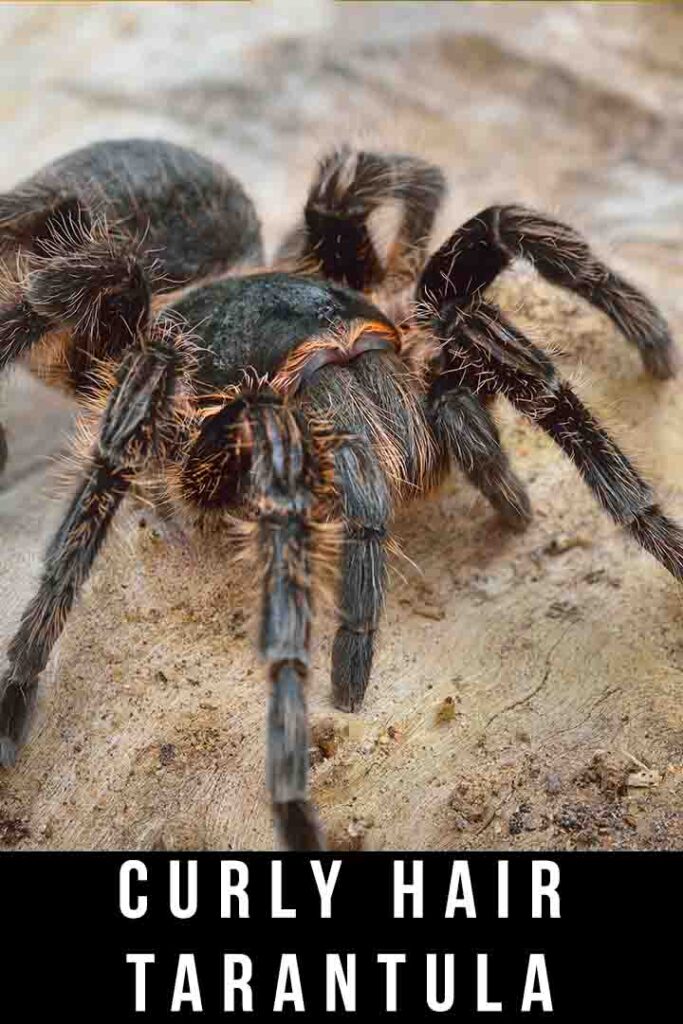
Some breeders ‘powerfeed’ spiderlings to make them grow faster, and achieve a larger adult size. Powerfeeding simply means feeding spiders as much as they will eat, as often as they will eat it, rather than controlling their portion sizes. Powerfed spiders can end up up to 25% bigger than spiders fed normally. But, it carries a risk of obesity and ill-health.
How many eyes does a curly hair tarantula have?
Eight! Like most arachnids, curly hairs have eight eyes. They are arranged with four eyes in a square at the front of the head, and two smaller pairs of eyes at the sides of the head. Because of this, it sometimes looks like they only have four eyes. All of their eyes are pretty small relative to their body, compared with other spiders. And unsurprisingly, this means their vision isn’t all that great either.
Are curly haired tarantulas good pets?
Tarantulas are the most commonly kept spiders, but curly haired tarantulas are one of the less well-known species among pet owners. Needless to say, a spider of any sort isn’t for everyone! According to veterinarians and experienced arachnologists (spider experts to you and me), the main advantages of pet spiders are:
- They’re extremely low maintenance.
- They take up very little space.
- Watching them grow, molt, build a home, decorate it with webbing and catch their food fosters an appreciation of how special spiders really are.
The disadvantages are:
- They generally dislike being handled, and get stressed by it.
- They can bite, which hurts in a similar way to a bee sting.
- Owners can develop an allergic reaction to the bite, or to the tiny hairs they brush into the air as a defense mechanism.
- Their bite can kill other pets, such as dogs.
Overall, they make good pets for adults who are keen to watch and enjoy them, but aren’t bothered about handling them. Since they prefer a small habitat, and they can comfortably go for one or two weeks between meals, they are well suited to people who live in apartments, and people who travel a lot.
Curly hair tarantula temperament
Terrestrial tarantula species like the curly hair are usually described as more docile than tree living species. They don’t do a lot besides hide out in their favorite spot in their tank, and watch out for food. A curly hair tarantula which is happy and relaxed in their environment may also decorate the entrance to their den with intricate layers of webbing. On the other hand, a stressed tarantuala may:
- Make a shrill shrieking noise with their legs when approached.
- Frequently brush the hairs on their abdomen into the air, resulting in a near-permanent bald. patch on their abdomen.
- Dig excessively into the substrate of their tank.
- Pace and climb the walls excessively.
- Sit in their water dish.
Most of these are either signs that they are being handled too much, or that their habitat is uncomfortable in some way.
Do curly hair tarantulas burrow?
Yes. In the wild, curly hair tarantulas create cozy dens by burrowing into the soil. In captivity they need a thick layer of soil, vermiculite or coconut coir in the bottom of their tank, to make a burrow in. To avoid their tarantula never being seen, some owners use a glass tank and place half a terracotta pot at one edge, with the entrance facing the center of the tank. That way their spider usually ends up burrowing under the opening of the pot and up to the glass underneath it, so they can be seen at all times.
Do curly hair tarantulas bite?
Yes. At the front of their body they have a pair of chelicerae – short arm-like appendages with fangs at the end. These fangs can deliver a painful bite. The bite isn’t usually lethal, but being bitten several times can trigger the onset of a severe allergic reaction in future, including fatal anaphylaxis.
However the curly haired tarantula’s main defense are the microscopic hairs on their abdomen, which they brush into the air when they feel threatened. These tiny hairs irritate the skin and eyes. Some tarantula owners have even needed surgery to clear the hairs out of their eyes! For this reason, you should always wear protective eyewear to feed your tarantula or clean their habitat.
Taming Curly hair tarantulas
Many vet and spider experts believe it is not in the best interests of tarantulas to hold them at all. The reasons being:
- It is very stressful for them
- They are likely to die if dropped, even from 12 inches.
- The risk of bites/irritation from shed hairs.
So curly haired tarantulas are best admired but left untouched. When you need to move them – for example to clean out their habitat – use a paint brush to gently nudge them into a cup, and secure them inside with a lid. Make sure there are ventilation holes!
Curly hair tarantula care
Spiders are surprisingly low maintenance pets. To care for one at home you will need:
- A long, shallow, secure tank (as opposed to a tall one sold for tree-dwelling tarantulas). The tank should be less than 30cm tall, to prevent falls. The ground area should be spacious enough for them to wriggle free of their old carapace when they molt, but not much larger. As a den-building species, they tend to find too much space stressful.
- Ambient humidity of 70 – 80%.
- Deep soil/ vermiculate/coir for burrowing. But don’t dig it up from the garden, as you’re likely to bring pests and diseases in with it. Buy it from a specialist pet store.
- Hiding spots. Half a terracotta plant pot will do.
- A source of heat if the room temperature drops below 68f in winter. Since tarantulas dislike bright light, a heat pad secured to the side of the tank (not the bottom) is better than a heat lamp.
- Fresh, clean water in a dish.
- Live food. Such as crickets, cockroaches, wax worms, meal worms, or flightless fruit flies to eat.
- Enough ventilation to prevent bacterial/fungal build up. But not so much that the tank doesn’t retain some humidity.
Adding a thermometer and humidity monitor to their tanks is a good idea, to monitor their atmosphere. Most health problems of tarantulas are due to mistakes in looking after them, such as:
- Dehydration.
- Difficulty shedding because humidity in their tank is too low.
- Bacterial or fungal infections because the humidity in their tank is too high.
- Parasites bought in on inappropriate substrates.
- Injuries and wounds from too-big prey.
It’s a good idea to locate a vet who is willing and qualified to treat your spider before you need them, since not all clinics will receive them.
How long do curly hair tarantulas live?
Female curly hair tarantulas live up to 30 years, but males die not long after reaching sexual maturity – usually between three and six years old. So the different sexes represent very different periods of commitment! Unfortunately, they are extremely difficult to tell apart as young spiderlings – guessing the sex of spiders from photos and moltd is a popular activity on arachnology forums! Once they are fully mature, males and females are much easier to tell apart, but it becomes impossible to accurately judge how old they are instead! Keeping them at the right temperature and humidity is one of the most important and commonly overlooked ways of ensuring they live as long as possible.
How often do curly hair tarantulas molt?
Male curly hair tarantulas molt 8 to 12 times by the time they are 4.5 to 5 years old. Females molt 9 to 13 times, which takes up to 6 years. They usually go through a period of fasting in the run up to a molt, and the old cuticle which they are due to shed will become darker.
During the molt they lie on their back on a nest of silk at the bottom of their burrow. The molting process lasts several hours and during it the spider relies on ambient humidity to prevent them getting trapped in their old cuticle. If they do get stuck, veterinary help will be needed to release them. Sometimes legs even get broken off during a difficult molt – but they will grow back during the next one!
Do curly hair tarantulas smell?
Curly hair tarantulas do not usually smell, if their environment is kept clear of waste material, and the humidity is correct. Uneaten food should be removed after every meal, and the water dish cleaned daily. If all this is done, their enclosure only needs cleaning about once a year. But if the tank is too damp, it can get smelly and dirty quicker, and also make your spider sick.
Keeping curly hair tarantulas together
Curly haired tarantulas are a solitary species. If you put more than one in a tank, other than to mate, they will fight and the winner will eat the loser. In other words, don’t do it!
How to find a curly hair tarantula for sale
The best way to find a curly hair tarantula for sale is through an arachnology society or spider keepers’ club in your region. Whoever sells you the spider should have detailed records of where the spider came from, how old it is, how many times it has molted already, etc. Illegally collecting specimens from the wild without a permit is a big problem for exotic species, and illegally imported wild spiders are also more likely to have parasites or infectious diseases. If you’re new to keeping spiders, it’s a good idea to get your first tarantula from someone who can help you set up a suitable habitat, and mentor you through such milestones as their first molt.
Mature tarantulas are sometimes offered for sale or adoption by owners who were unprepared for how long they live, or who are moving into new accommodation and can’t take their arachnid with them. Bear in mind you will only have their word for how old the spider is.
Is a Curly hair tarantula right for me
Curly hair tarantulas can be fascinating, low maintenance pets for the right people. They don’t like to be handled, and tarantula hair can cause serious irritation and inflammation to the skin and eyes if a stressed spider brushes it in your direction. They are a good match for people who would like an unusual pet, but who have limited space to keep one, and spend a lot of time outside the home. If a curly hair tarantula is your first pet spider, it’s a good idea to ask a more experienced owner to help you get set up.
If you already have a curly hair tarantula we’d love to hear about them in the comments box down below? Why did you choose them over the more well-known species, and have they met your expectations? Before you go, you might enjoy learning about these animals with curly hair too:
- Texel Guinea Pig – Complete Breed Guide To The Curly Haired Cavy
- Rex Rabbit Breed Guide
- Alpaca Guinea Pig – Complete Guide To The Alpaca Breed
- Do Sheep Have Horns?
And check out these other pet tarantula species too:
- Why The Pumpkin Patch Tarantula Is Such A Popular Pet
- Is The Antilles Pinktoe Tarantula The Best Pet Arachnid?
- Green Bottle Blue Tarantulas
- Gooty Sapphire Tarantula
References And Resources
Draper & Trim. Dyskinetic syndrome in tarantula spiders. Veterinary Nursing Journal. 2018.
Marnell. Tarantula and Hermit Crab Emergency Care. Veterinary Clinics: Exotic Animals Practice. 2016.
Mendoza & Francke. Systematic revision of Mexican threatened tarantulas Brachypelma , with a description of a new genus, and implications on the conservation. Zoological Journal of the Linnean Society. 2020.
Morehouse. Primer: Spider Vision. Current Biology Magazine. 2020.
Padilla et al. Growth Rates of Laboratory Reared Honduran Curly Hair Tarantulas in Response to Power Feeding. Arachnology. 2018.
Pellett et al. Tarantula husbandry and critical care. UK-Vet Companion Animal. 2015.
Fukushima et al. Wildlife collection for scientific purposes. Conservation Biology. 2020.
Tillotson & Giddens. Sight threatening pets? The tarantula tale. International Journal of Ophthalmic Practice. 2013.

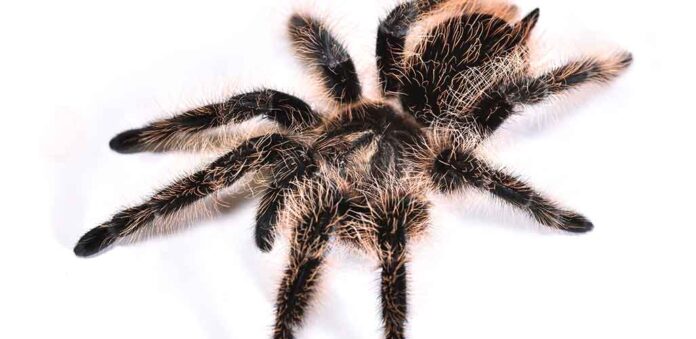
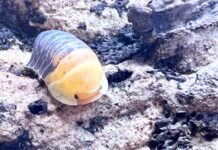
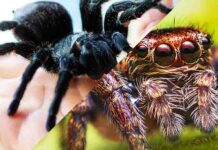
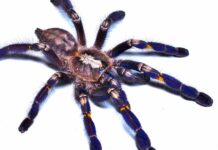











I can’t seem to find all of my curly hair tarantula. It looks like there are only two large eyes in front.